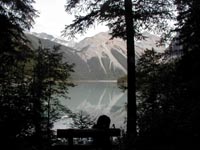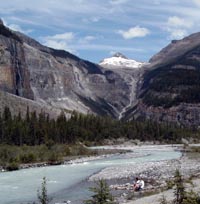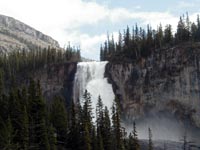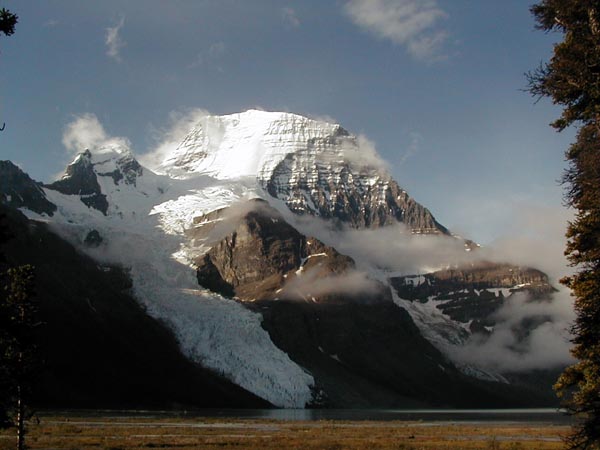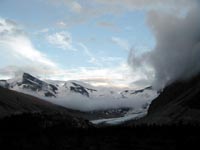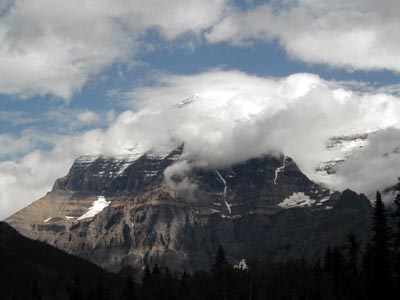 This
is Mount Robson, as viewed from the south side of the mountain, behind
the Visitor's Center in Mount Robson Provincial Park in British Columbia,
Canada. The park is a bit east of Jasper, Alberta, on the western
side of the Canadian Rockies. It isn't a very good picture, because
the summit is not clearly visible, but because the mountain makes its own
weather, it can take a lot of time to view the summit from this angle.
That's because air bearing Pacific moisture must rise over the summit as
it moves east, and the colder temperature around the summit causes these
clouds.
This
is Mount Robson, as viewed from the south side of the mountain, behind
the Visitor's Center in Mount Robson Provincial Park in British Columbia,
Canada. The park is a bit east of Jasper, Alberta, on the western
side of the Canadian Rockies. It isn't a very good picture, because
the summit is not clearly visible, but because the mountain makes its own
weather, it can take a lot of time to view the summit from this angle.
That's because air bearing Pacific moisture must rise over the summit as
it moves east, and the colder temperature around the summit causes these
clouds.
Mount Robson is the tallest peak in the Canadian Rockies, and it is spectacular in that it rises about 10,000 feet above the point where this picture was taken, near the trailhead for the hike. Because of this vertical rise, the views of the mountain from the trail are wonderful. The Berg Lake trail, which runs around the west side of the mountain up to Berg Lake, is extremely popular - in one recent year 11,000 people registered for overnight hikes on the trail - so it's on a quota system which limits the number of people who can camp on the trail at any given time. Details and reservations can be had by calling the park at 604-566-4325.
The number of reservations is limited to a partial set of the total, and the remaining camping spots on the trail are released at noon each day for the following day(s). So, on Tuesday at noon, I got my spots at Robson Pass reserved for Wednesday and Thursday nights, at the visitor center.
